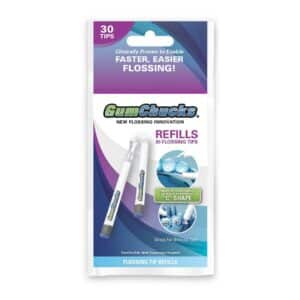Good oral health is an essential part of your overall well-being, but there are many misconceptions about how to maintain a healthy mouth. From the best practices for flossing to the real risks of sugary foods, misinformation can lead people astray. Let’s take a closer look at some of the top myths about oral health to set the record straight.
Myth: If Your Gums Don’t Bleed, Then Your Gums are Healthy
It’s easy to assume that if you don’t notice any bleeding when brushing or flossing, your gums are in good shape. However, bleeding gums are often a sign of gingivitis or early-stage gum disease. Healthy gums should be pink, firm, and not prone to bleeding, even when you floss or brush. If you notice your gums bleed regularly, it’s important to see a dentist, as untreated gingivitis can progress to periodontitis, a more serious gum disease that can lead to tooth loss.
Myth: You Don’t Need to Worry About Your Teeth if They Aren’t in Pain
Many people avoid going to the dentist unless they experience pain, assuming that if they aren’t in discomfort, everything must be fine. In reality, many dental issues, such as cavities or early gum disease, don’t cause noticeable pain until they reach advanced stages. Regular dental checkups and cleanings are important for catching problems before they become serious. Early intervention can save you from painful treatments, such as root canals or tooth extractions, and help you maintain long-term oral health.
Myth: Mouthwash Cures Bad Breath
While mouthwash can temporarily mask bad breath, it doesn’t address the underlying causes of chronic halitosis. Bad breath is often caused by bacterial buildup on the tongue, poor dental hygiene, or even health issues like dry mouth or gastrointestinal problems. To combat persistent bad breath, focus on brushing your teeth and tongue regularly, flossing, staying hydrated, and visiting your dentist for a thorough cleaning and checkup.
Myth: Brushing Harder Results in Cleaner Teeth
Many people think that brushing their teeth with more force will remove plaque and tartar more effectively. However, brushing too hard can actually damage your gums and enamel, leading to increased tooth sensitivity and even gum recession. The truth is that it’s the technique, not the pressure, that matters. You should brush gently with a soft-bristled toothbrush and use circular motions to clean your teeth. Aim to brush for two minutes, twice a day, to get the best results without causing harm to your mouth.
Myth: Sugar is the Only Cause of Cavities
While sugar does play a significant role in cavity formation, it’s not the sole culprit. Cavities are caused by the acid produced by bacteria that feed on food particles, and this acid erodes tooth enamel. Foods high in starches, like chips, crackers, and bread, can also contribute to plaque buildup and cavities. It’s the frequency of sugar and starch consumption that matters most; such as snacking throughout the day, especially on sugary or starchy foods, that gives bacteria more opportunities to produce harmful acids. Brushing and flossing regularly and limiting the frequency of sugary or starchy snacks is key to preventing cavities.
Myth: X-Rays at the Dentist are Unsafe
Dental X-rays often carry a stigma because of concerns about radiation exposure. However, modern dental X-ray equipment uses minimal radiation, and the benefits far outweigh any risks. X-rays are a critical diagnostic tool that allows your dentist to detect problems that are not visible during a routine exam, such as cavities between teeth, bone loss, and impacted teeth. Dentists take precautions, such as using lead aprons and limiting the frequency of X-rays, to keep radiation exposure as low as possible.
Myth: Whitening Strips and Whitening Toothpaste is Harmful to Your Teeth
It’s common for people to worry that teeth-whitening products can harm their enamel, but when used as directed, they are generally safe. Whitening toothpaste or over-the-counter whitening strips are effective at removing surface stains caused by food, drinks, and smoking. However, overuse of some whitening products can cause tooth sensitivity or enamel erosion, so it’s important to follow instructions carefully and consult with your dentist about the best whitening options for your needs.
GumChucks: For Optimal Oral Health
There’s a lot of misinformation surrounding oral health, but debunking these myths can help you take better care of your teeth and gums. Maintaining good oral hygiene through proper brushing and flossing, eating a balanced diet, and visiting your dentist regularly are the cornerstones of a healthy mouth.
To prevent numerous painful health complications such as gum disease and cavities, it’s important to practice affective oral health habits beforehand. Flossing is the only way to remove tartar from between your teeth and keep plaque out of hard-to-reach places. Fortunately, GumChuck’s unique design does this better than any other flosser on the market. GumChucks’ design ensures a flossing experience that’s faster, easier, and more effective than competing flossers or traditional floss. Our two handles with disposable floss allow you to comfortably reach all your teeth, even those in the back, while wrapping the floss around each tooth. This creates the vital “C-Shape” necessary to get below the gum line and effectively clean each tooth.
-
Refill Pack (30 tips) • Bundle of 50 packs$150.00
-
Starter Samples (handles + 10 tips) • Bundle of 50 packs$64.50
-
Subscription: GumChucks Flossing Tip RefillsFrom: $5.19 / year




0 Comments